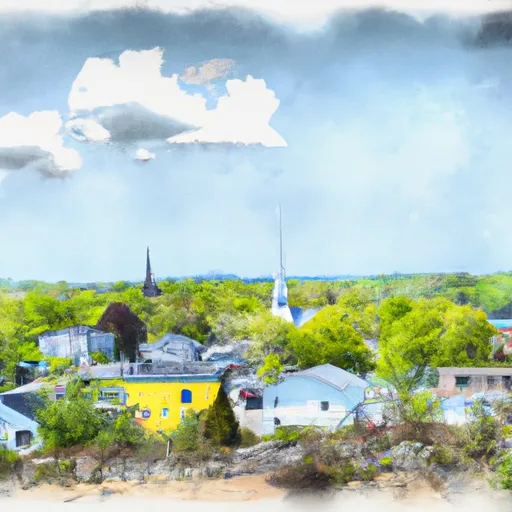-
 Snoflo Premium
Snoflo Premium
Get unlimited access to all our content
With no Ad interruptions! - Start Your Free Trial Login with existing account
Randolph
Eden Index
Climate
8.2
•
Recreation
3.2
•
Community
2.7
•
Safeguard
5.1/10

Randolph, Maine is a picturesque town located in Kennebec County. It experiences a humid continental climate, characterized by warm summers and cold winters. The average high temperature in summer ranges from 75-85°F (24-29°C), while winter temperatures can drop to 10-20°F (-12 to -6°C). Residents and visitors can enjoy the beauty of all four seasons, with colorful foliage in the fall and snow-covered landscapes in winter.
The town of Randolph is blessed with several water bodies, including the Kennebec River, which flows along its eastern boundary. This river offers opportunities for boating, fishing, and other water-based activities. Additionally, there are several ponds and lakes in the region, such as Togus Pond and Cobbosseecontee Lake, providing ample opportunities for swimming, kayaking, and exploring scenic shorelines.
Outdoor enthusiasts can take advantage of the numerous recreational opportunities available in Randolph. The area boasts extensive hiking trails, such as the Kennebec Highlands and the Appalachian Trail, offering breathtaking views of the surrounding mountains and valleys. Nature lovers can also enjoy bird-watching, camping, and wildlife observation in the nearby forests and conservation areas.
Overall, Randolph, Maine provides a delightful climate, abundant water resources, and diverse outdoor recreation opportunities, making it an ideal destination for those seeking adventure and natural beauty.
What is the Eden Index?
The Snoflo Eden Index serves as a comprehensive rating system for regions, evaluating their desirability through a holistic assessment of climate health, outdoor recreation opportunities, and natural disaster risk, acknowledging the profound impact of these factors on livability and well-being.
Climate Health Indicator (CHI): 8.2
Randolph receives approximately
1157mm of rain per year,
with humidity levels near 76%
and air temperatures averaging around
7°C.
Randolph has a plant hardyness factor of
5, meaning
plants and agriculture in this region thrive during a short period during spring and early summer. Most
plants will die off during the colder winter months.
By considering the ideal temperature range, reliable water supplies, clean air, and stable seasonal rain or snowpacks, the Climate Health Indicator (CHI) underscores the significance of a healthy climate as the foundation for quality living.
A healthy climate is paramount for ensuring a high quality of life and livability in a region, fostering both physical well-being and environmental harmony. This can be characterized by ideal temperatures, reliable access to water supplies, clean air, and consistent seasonal rain or snowpacks.
Weather Forecast
Streamflow Conditions
Kennebec
Area Rivers
Kennebec
Snowpack Depths
Kennebec
Reservoir Storage Capacity
Kennebec
Groundwater Levels
Recreational Opportunity Index (ROI): 3.2
The Recreational Opportunity Index (ROI) recognizes the value of outdoor recreational options, such as parks, hiking trails, camping sites, and fishing spots, while acknowledging that climate plays a pivotal role in ensuring the comfort and consistency of these experiences.
Access to outdoor recreational opportunities, encompassing activities such as parks, hiking, camping, and fishing, is crucial for overall well-being, and the climate plays a pivotal role in enabling and enhancing these experiences, ensuring that individuals can engage in nature-based activities comfortably and consistently.
Nearby Ski Areas
Catastrophe Safeguard Index (CSI):
The Catastrophe Safeguard Index (CSI) recognizes that natural disaster risk, encompassing floods, fires, hurricanes, and tornadoes, can drastically affect safety and the overall appeal of an area.
The level of natural disaster risk in a region significantly affects safety and the overall livability, with climate change amplifying these risks by potentially increasing the frequency and intensity of events like floods, fires, hurricanes, and tornadoes, thereby posing substantial challenges to community resilience and well-being.
Community Resilience Indicator (CRI): 2.7
The Community Resilience Indicator (CRI) recognizes that education, healthcare, and socioeconomics are crucial to the well-being of a region. The CRI acknowledges the profound impact of these elements on residents' overall quality of life. By evaluating educational resources, healthcare accessibility, and economic inclusivity, the index captures the essential aspects that contribute to a thriving community, fostering resident satisfaction, equity, and social cohesion.

